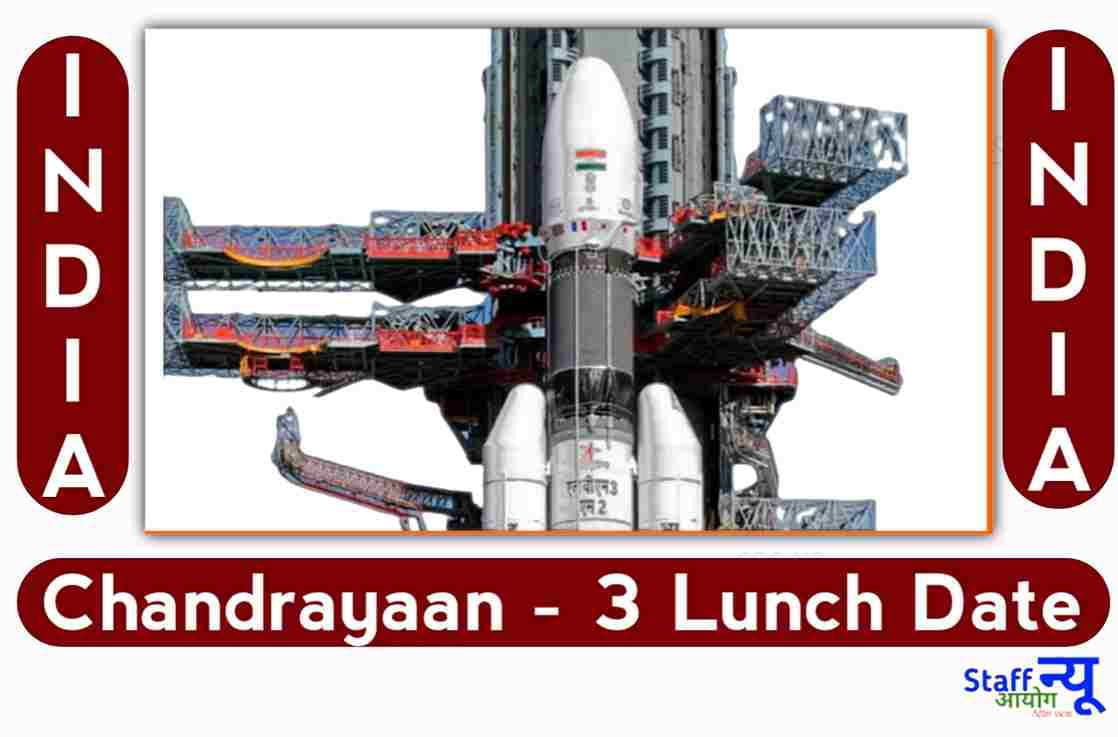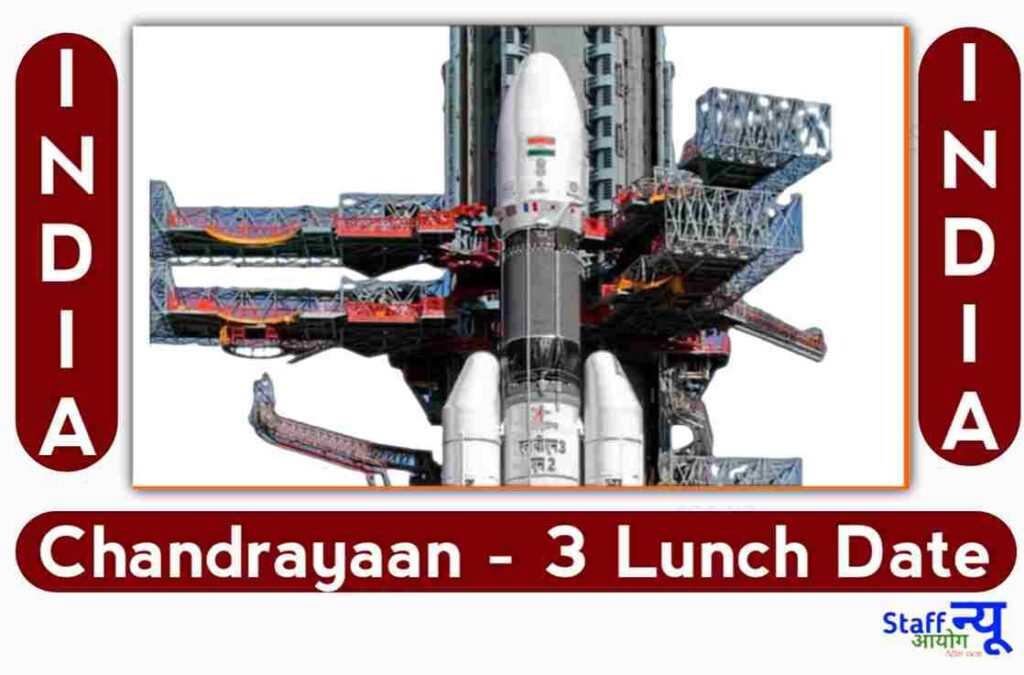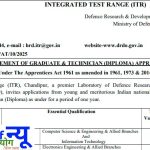- Home
- (Today) Chandrayaan 3 Launch Date, Check ISRO Moon Mission 3 Budget, Vehicle LVM3, News, Image

(Today) Chandrayaan 3 Launch Date, Check ISRO Moon Mission 3 Budget, Vehicle LVM3, News, Image
Chandrayaan 3, India’s next moon mission, is all set to launch on July 14, 2023. The mission aims to land a spacecraft on the moon’s surface and send a rover to explore and conduct scientific experiments. It is a follow-up to the previous Chandrayaan-2 mission which faced some challenges during the landing. The budget allocated for Chandrayaan-3 is around ₹615 crore. This mission is an important step for India in its exploration of the moon and advancing scientific knowledge. Exciting news and images related to the mission are expected to come soon.
Chandrayaan 3
Chandrayaan 3 is India’s 3rd Moon mission. It aims to land a spacecraft on the moon’s surface and deploy a rover for scientific exploration. The mission is a follow-up to Chandrayaan-2 and will study the moon’s properties and composition. Its main objective is to achieve a successful landing and conduct experiments on the lunar surface. Chandrayaan 3 represents India’s continued efforts in space exploration and advancing our knowledge of the moon.
| Mission Name | Chandrayaan-3 |
|---|---|
| Launch Date | July 14, 2023 |
| Launch Time | 2:35 pm IST |
| Article Category | Event |
| Launch Site | Satish Dhawan Space Centre, Sriharikota, Andhra Pradesh |
| Landing Date | August 23, 2023 (estimated) |
| Objectives | 1. Demonstrate safe landing and roving on the moon’s surface |
| 2. Study lunar regolith’s thermophysical properties | |
| 3. Investigate lunar seismicity | |
| 4. Analyze lunar surface plasma environment | |
| 5. Study elemental composition near landing site | |
| Previous Mission | Chandrayaan-2 |
| – Launched on July 22, 2019 | |
| – Partial failure due to Vikram lander crash on the moon | |
| Cost | Approximately ₹615 crore |
| Key Modifications | – New lander with four motors instead of five |
| – Software adjustments | |
| Notable Payload | Spectro-polarimetry of Habitable Planet Earth (SHAPE) |
| – Intended for studying spectral and polarimetric measurements of Earth from lunar orbit | |
| Launch Vehicle | LVM3 (Launch Vehicle Mark-III) |
| – India’s heaviest rocket | |
| – Gross lift-off weight of 640 tonnes | |
| – Length of 43.5 meters | |
| – Payload capacity of 8 tonnes to LEO | |
| – Payload capacity of 4 tonnes to GTO | |
| Status | Final integration and testing almost complete |
| Essential tests to validate spacecraft capabilities already completed | |
| Final launch preparations underway |
Chandrayaan 3 Highlights
Chandrayaan-3: India’s Third Lunar Mission Continues the Legacy of Chandrayaan-1 and Chandrayaan-2
Chandrayaan-3 Aims for Successful Moon Landing and Rover Deployment
Countdown Begins: Chandrayaan-3 Set to Launch on July 14, 2023
Chandrayaan-3: ₹615 Crore Budget Allocated for Ambitious Lunar Mission
Exploring the Moon: Chandrayaan-3 to Study Moon’s Properties and Composition
Following in the Footsteps: Chandrayaan-3, the Follow-Up Mission to Chandrayaan-2
Unlocking Lunar Secrets: Chandrayaan-3 Expected to Provide Valuable Insights
Chandrayaan 3 Launch Date
Buckle up for an astronomical adventure as Chandrayaan 3, India’s 3rd Moon Mission prepares for its much-anticipated launch. The countdown is set for July 14, 2023, at the Satish Dhawan Space Centre, promising a thrilling journey to the moon’s surface. With the objective of a successful landing and rover deployment, Chandrayaan 3 aims to unlock the moon’s enigmatic secrets. This mission showcases India’s ambition to reach new frontiers in space exploration and pave the way for groundbreaking scientific discoveries.

Chandrayaan 3 Budget
Prepare to witness the financial magnitude of India’s lunar ambitions as the budget for Chandrayaan 3 is unveiled. With a staggering allocation of approximately ₹615 crores, this lunar mission demonstrates India’s steadfast commitment to exploring the celestial wonders of the moon. The significant investment encompasses the development of cutting-edge spacecraft, state-of-the-art rocket technology, and rigorous testing procedures. This financial commitment reflects India’s unwavering dedication to pushing the boundaries of space exploration and uncovering the secrets of the lunar landscape. Chandrayaan 3 is poised to make a resounding impact on the global stage of scientific innovation.
| Join Telegram For Fast Update | Join |
Chandrayaan 3 Detail
Chandrayaan 3 Spacecraft and Subsystems:
- Propulsion module: Mass of 2148 kg, generates 758 W power, features a large solar panel and main thruster nozzle.
- Lander: Mass of 1752 kg (including 26 kg for the rover), generates 738 W power, equipped with landing legs, landing thrusters, and various sensors for safe touchdown. Attitude control through reaction wheels, propulsion using a bipropellant system, and communication via an X-band antenna.
- Rover: Rectangular chassis with a six-wheel rocker-bogie wheel drive assembly, navigation cameras, and a solar panel generating 50 W power. Communicates with the lander through Rx/Tx antennas.
Payload and Instruments:
- Lander instruments: Chandra’s Surface Thermophysical Experiment (ChaSTE), an Instrument for Lunar Seismic Activity (ILSA), Radio Anatomy of Moon Bound Hypersensitive ionosphere and Atmosphere (RAMBHA), and a passive laser retroreflector array for lunar ranging studies.
- Rover instruments: Alpha Particle X-ray Spectrometer (APXS) and Laser Induced Breakdown Spectroscope (LIBS) to study local surface elemental composition.
- Propulsion Module/Orbiter instrument: Spectropolarimetry of HAbitable Planet Earth (SHAPE) to study Earth from lunar orbit.
Mission Profile:
- Launch scheduled on July 14, 2023, at 9:00 UT (2:30 p.m. India Standard Time) from Satish Dhawan Space Center.
- GSLV Mark 3 heavy-lift launch vehicle used to place Chandrayaan 3 into an elliptic parking orbit (170 x 36,500 km).
- The propulsion module brings the lander/rover to a 100 km circular polar lunar orbit before separation.
- Lander touchdown planned in the Moon’s south polar region near 69.37 S, 32.35 E with controlled vertical velocity (<2 m/s) and horizontal velocity (<0.5 m/s).
- Communication is enabled by the propulsion module/communications relay satellite and potential backup relay with Chandrayaan-2.
- Lander and rover are designed for approximately 14 Earth days of operation during one lunar daylight period.
| Component | Description |
|---|---|
| Propulsion Module | – Mass: 2148 kg |
| – Power: 758 W | |
| – Features a large solar panel and main thruster nozzle | |
| Lander | – Mass: 1752 kg (including 26 kg for the rover) |
| – Power: 738 W | |
| – Equipped with landing legs, landing thrusters, and various sensors | |
| – Sensors include accelerometer, altimeters, Doppler velocimeter, and more | |
| Rover | – Rectangular chassis mounted on a six-wheel rocker-bogie wheel drive assembly |
| – Features navigation cameras and a solar panel generating 50 W power | |
| Payload and Instruments | – Chandra’s Surface Thermophysical Experiment (ChaSTE) |
| – Instrument for Lunar Seismic Activity (ILSA) | |
| – Radio Anatomy of Moon Bound Hypersensitive ionosphere and Atmosphere (RAMBHA) | |
| – Passive laser retroreflector array for lunar ranging studies | |
| – Alpha Particle X-ray Spectrometer (APXS) and Laser Induced Breakdown Spectroscope (LIBS) for the rover | |
| – Spectropolarimetry of HAbitable Planet Earth (SHAPE) for the propulsion module/orbiter |
FAQ
What is Chandrayaan-3?
When is Chandrayaan-3 set to launch?
What is the budget allocated for Chandrayaan-3?
What are the objectives of Chandrayaan-3?
What is the launch vehicle for Chandrayaan-3?
What is the current status of Chandrayaan-3?
Answer Key
SSC – Staff Selection Commission
Categories
- Admit Card
- AI and Technology
- Answer Key
- Application Form
- Banking Jobs
- Board Result
- BSF and Army
- BTSC
- Call Letter
- CBSE Update
- Counselling
- Cricket
- Current Affairs
- Cut Off
- Earning Courses
- Earning Tips
- Entertainment
- Events
- Exam
- Films
- Finance
- Flood
- Game
- Govt interview update
- Havaldar and Constable Bharti
- indian railways
- IPl 2023
- Latest Job
- live score
- Lottery Results
- Marit List
- Mobile
- Net worth
- News
- Notice
- NTPC Engineering jobs
- Panchang
- Quotes
- Recruitment
- Result
- Sample paper
- Sarkari Naukari
- Sarkari Yojana
- Schemes
- Selection
- SSC
- SSC Admit Card
- SSC Answer Key
- SSC Exam
- SSC Recruitment
- SSC Result
- SSC Syllabus
- SSCNR
- Stock Market
- Syllabus
- Teacher's Job
- Technology
- Topper List
- typing test
- University Result
- UPSC updates
- Work From Home Jobs
- world record


























